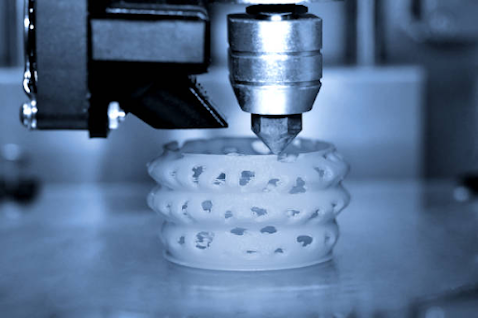The intersection of science and technology with fashion has
revolutionised the way we think about and engage with both industries. From
advanced materials and manufacturing techniques to innovative designs and
sustainable practices, the fusion of these two domains has led to the creation
of innovative, functional, and fashionable products that have changed the way
we dress and accessories.
Science and technology play a vital role in the fashion industry, as
they allow designers to create innovative and functional products that meet the
needs and preferences of consumers. Some of the key ways in which science and
technology have impacted fashion include:
Advanced Materials and Manufacturing Techniques
Science and
technology have allowed designers to create clothing and accessories using
advanced materials and manufacturing techniques that are more durable,
functional, and aesthetically pleasing. Examples include the use of technical
fabrics like Gore-Tex and Lycra and the adoption of 3D printing and computer-aided
design (CAD) technology.
Smart and Connected Technologies
Wearable technologies, such as fitness trackers
and smartwatches, have allowed designers to create clothing and accessories
that can track and monitor various health and wellness metrics. This has led to
the creation of fashionable fitness wear and accessories that not only look
good but also provide valuable health and wellness data to the user.
Sustainable and Eco-Friendly Fashion
Science and technology have also enabled
designers to create clothing and accessories that are made from environmentally
friendly materials and produced using sustainable manufacturing processes. This
includes the use of recycled materials, biodegradable fabrics, and low-impact
dyes, as well as the adoption of energy-efficient and water-saving production
methods.
Personalization
and Customization
The use of technology, such as computer-aided
design (CAD) software and 3D printing, has allowed designers to offer greater
customization and personalization options to consumers, enabling them to create
unique, one-of-a-kind products
One of the key areas where science and technology have had a
significant impact on fashion is the development of advanced materials and
manufacturing techniques. These have allowed designers to push the boundaries
of traditional fashion design and create clothing and accessories that are both
functional and aesthetically pleasing.
Examples
One example of this is the use of technical fabrics and materials,
such as Gore-Tex and Lycra, which are designed to be waterproof, breathable,
stretchy, and durable. These materials have allowed designers to create
clothing and accessories that can withstand a wide range of weather conditions
and physical activities, making them ideal for outdoor and activewear.
Another example is the use of 3D printing and computer-aided design
(CAD) technology in the fashion industry. These technologies have
revolutionised the way clothes and accessories are designed and produced,
allowing for greater customization, faster turnaround times, and reduced waste.
For example, fashion designers can use CAD software to create detailed,
accurate digital models of their designs, which can then be 3D printed and used
to create prototypes or even finished products.
In addition to advanced materials and manufacturing techniques, the
integration of science and technology with fashion has also led to the
development of innovative designs and sustainable practices.
One example of this is the use of smart and connected technologies in
fashion. These technologies, such as wearable fitness trackers and
smartwatches, have allowed designers to create clothing and accessories that
can track and monitor various health and wellness metrics, such as heart rate,
sleep patterns, and activity levels. This has led to the creation of
fashionable fitness wear and accessories that not only look good but also
provide valuable health and wellness data to the user.
Another example is the growing trend of sustainable and eco-friendly
fashion. With the help of science and technology, designers are now able to
create clothing and accessories that are made from environmentally friendly
materials and produced using sustainable manufacturing processes. This includes
the use of recycled materials, biodegradable fabrics, and low-impact dyes, as
well as the adoption of energy-efficient and water-saving production methods.
In conclusion, the intersection of science and technology with fashion
has led to the creation of innovative, functional, and fashionable products
that have changed the way we dress and accessories. From advanced materials and
manufacturing techniques to innovative designs and sustainable practices, the
fusion of these two domains has opened up endless possibilities for the future
of fashion.
Overall, science and technology have had a significant impact on the
fashion industry, allowing designers to create innovative, functional, and
fashionable products that meet the evolving needs and preferences of consumers.
Written By: Atul Kumar Singh
Edited By: Nidhi Jha

















0 Comments